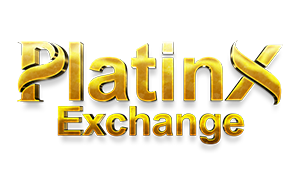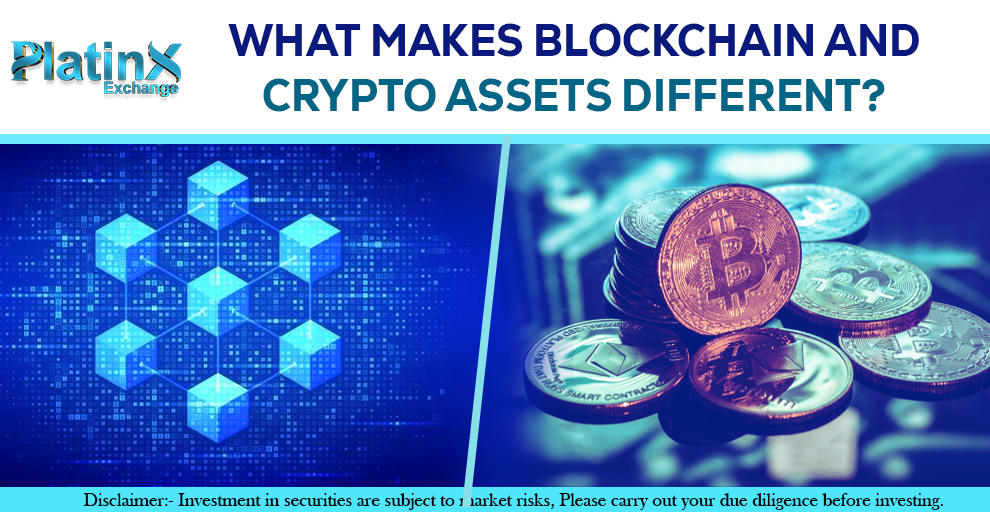Introduction
In the rapidly evolving world of digital finance, two terms often come up in discussions—blockchain and crypto assets. While they are closely related, they are not the same. Blockchain is the underlying technology that enables the existence of crypto assets, but crypto assets themselves have various uses beyond just serving as digital currencies. Understanding the distinctions between these concepts is crucial for investors, businesses, and technology enthusiasts looking to explore the potential of decentralized finance (DeFi), tokenized assets, and blockchain applications.
This article will explore what makes blockchain and crypto assets different, their individual significance, and how platforms like Platinx Exchange are facilitating growth in the digital finance sector.
What is Blockchain?
Blockchain is a decentralized ledger technology (DLT) that enables the secure recording, storage, and transfer of data across a distributed network of computers. Unlike traditional databases managed by a single entity, blockchain operates on a peer-to-peer network where each participant has a copy of the ledger.
Key characteristics of blockchain technology include:
Decentralization
No central authority controls the data, making it resistant to manipulation.
Transparency
Transactions recorded on the blockchain are visible to all participants.
Immutability
Once data is added, it cannot be altered or deleted, ensuring security and trust.
Security
Cryptographic algorithms protect transactions from fraud and hacking.
Blockchain is the backbone of various applications, including cryptocurrencies, supply chain tracking, smart contracts, and decentralized applications (DApps).
What Are Crypto Assets?
Crypto assets are digital assets that exist on a blockchain. They utilize cryptographic principles to secure transactions, control the creation of new units, and verify asset transfers. These assets come in various forms, including cryptocurrencies, stablecoins, utility tokens, and security tokens.
Types of Crypto Assets
Cryptocurrencies
Digital currencies like Bitcoin (BTC) and Ethereum (ETH) that serve as a medium of exchange.
Stablecoins
Assets pegged to real-world currencies (e.g., USDT, USDC) to reduce volatility.
Utility Tokens
Tokens used within a specific blockchain ecosystem (e.g., Binance Coin – BNB).
Security Tokens
Digital securities that represent ownership in real-world assets.
Each type of crypto asset serves a different function within the blockchain ecosystem, making them more than just digital currencies.
Key Differences Between Blockchain and Crypto Assets
While blockchain and crypto assets are interrelated, their functions and applications are distinct. Below are the key differences:
| Feature | Blockchain | Crypto Assets |
| Definition | A decentralized ledger technology | Digital assets built on blockchain |
| Primary Function | Secure data storage and transaction recording | Facilitate financial transactions and digital ownership |
| Scope | Used in finance, healthcare, supply chains, etc. | Primarily used for trading, payments, and investments |
| Ownership | Open-source and decentralized | Can be privately owned or issued |
| Volatility | Stable technology | Can be highly volatile |
| Regulation | Still evolving, varies by jurisdiction | Subject to financial regulations in many countries |
The Role of Platinx Exchange in Blockchain and Crypto Assets
As blockchain technology and crypto assets continue to evolve, exchanges like Platinx Exchange play a crucial role in bridging the gap between users and digital finance opportunities.
Platinx Exchange offers:
Secure Trading Platform
Advanced security measures to protect user funds.
Wide Asset Selection
Supports multiple cryptocurrencies and tokenized assets.
High Liquidity
Ensures smooth and efficient trading with minimal slippage.
User-Friendly Interface
Designed for both beginners and experienced traders.
Regulatory Compliance
Adheres to industry regulations to ensure transparency.
By providing a reliable and accessible platform, Platinx Exchange helps users engage in crypto trading and investment with confidence.
Future of Blockchain and Crypto Assets
The future of blockchain and crypto assets looks promising, with increasing adoption across industries. Key trends to watch include:
Institutional Adoption
More companies and governments are integrating blockchain for secure transactions.
DeFi Growth
Decentralized finance platforms are reshaping traditional banking services.
NFT Expansion
Non-fungible tokens (NFTs) are revolutionizing digital ownership in art, music, and gaming.
Regulatory Developments
Clearer regulations are expected to bring stability and mainstream acceptance.
Blockchain in Enterprise
Businesses are using blockchain for supply chain management, healthcare, and data security.
As these trends develop, platforms like Platinx Exchange will continue to play a vital role in enabling seamless access to blockchain-based financial solutions.
Frequently Asked Questions (FAQ)
What is the main difference between blockchain and crypto assets?
Blockchain is a decentralized ledger technology, while crypto assets are digital tokens built on blockchain networks.
Are all cryptocurrencies based on blockchain?
Yes, most cryptocurrencies operate on blockchain technology, which provides security and decentralization.
Can blockchain exist without crypto assets?
Yes, blockchain has use cases beyond cryptocurrencies, such as supply chain management and smart contracts.
Are crypto assets legal?
Regulations vary by country. Some nations embrace crypto assets, while others impose restrictions.
Is investing in crypto assets risky?
Yes, crypto assets are highly volatile and should be approached with proper risk management.
What is the role of exchanges like Platinx Exchange?
They facilitate the buying, selling, and trading of crypto assets in a secure and regulated environment.
How do stablecoins differ from other cryptocurrencies?
Stablecoins are pegged to traditional currencies to minimize price volatility.
Can blockchain be hacked?
Blockchain is highly secure, but vulnerabilities exist in applications built on it.
What is DeFi, and how does it relate to crypto assets?
Decentralized Finance (DeFi) uses blockchain to create financial applications without intermediaries.
Will blockchain and crypto assets replace traditional finance?
While they are disrupting finance, complete replacement is unlikely. Instead, hybrid models may emerge.
Conclusion
Blockchain and crypto assets are two distinct yet interconnected components of the digital finance revolution. While blockchain serves as the foundational technology, crypto assets leverage its capabilities for various financial applications. As the industry matures, exchanges like Platinx Exchange are driving mainstream adoption by offering secure and user-friendly platforms for trading and investment.
Understanding the differences between blockchain and crypto assets is crucial for navigating this evolving landscape. With growing institutional interest, regulatory clarity, and innovative use cases, the future of blockchain and crypto assets is poised for significant growth.

